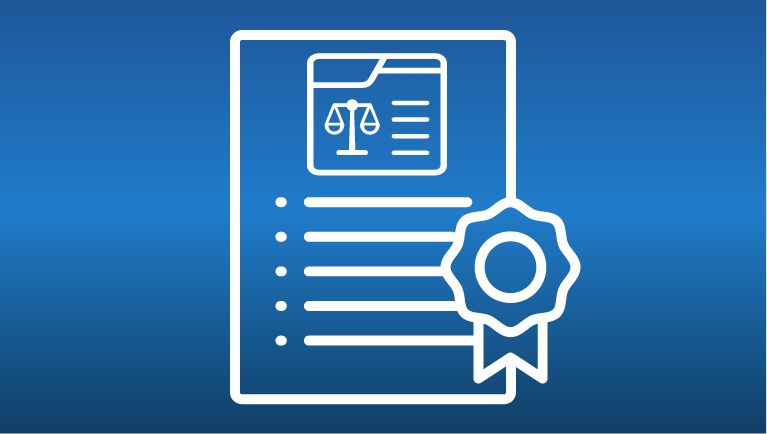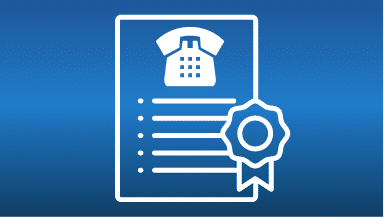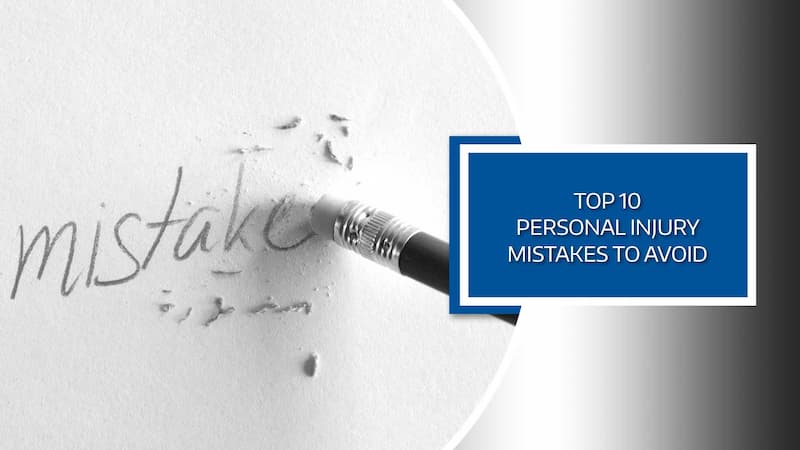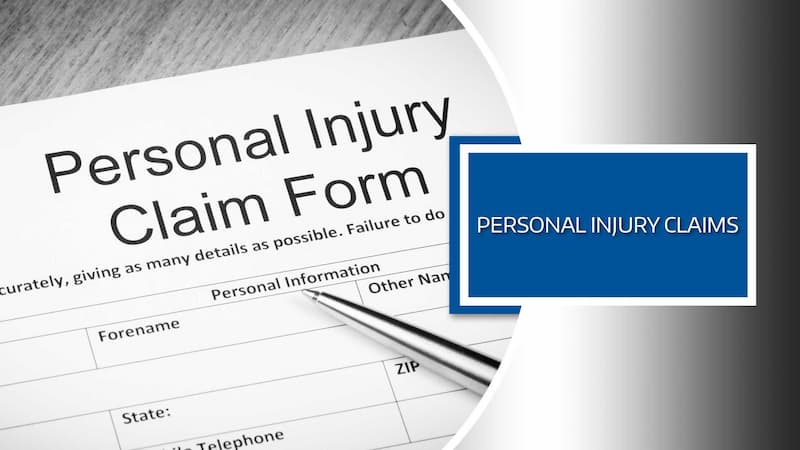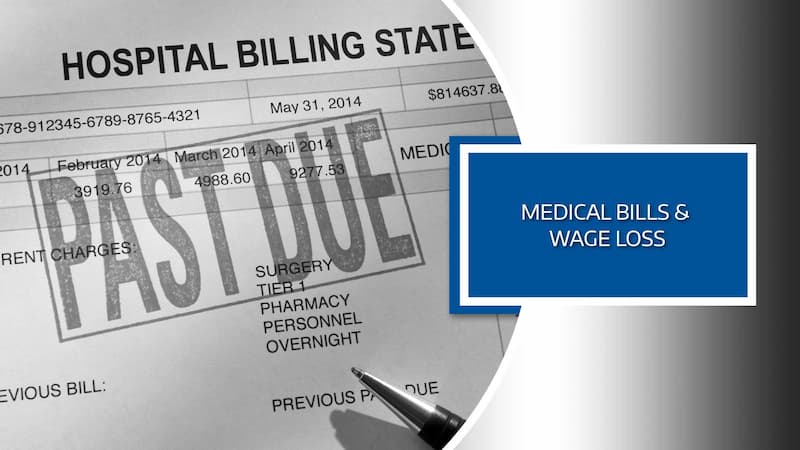LA PRÁCTICA DEL CUIDADO:
A PROVIDER’S GUIDE
PERSONAL INJURY CLAIM
RESOURCES FOR
HEALTHCARE
PROFESSIONALS
La Defensa Del Paciente

EDUCATE YOUR PATIENTS
About the Most Common Personal Injury Mistakes

It’s one thing to know the most critical rules to help avoid mistakes. Effectively and completely communicating those rules to your patients can be more challenging.
By following our weekly posts, you will find straightforward suggestions and helpful ideas for sharing information with you patients and your staff.
VIDEOS
ARTÍCULOS
#1 MISTAKE: Why your patients should not settle their claim before they’re done treating

Your patient settling their personal injury claim before they’re done treating is the number one mistake they can make concerning their car accident.
While this may seem obvious to you as a medical provider, we see clients make this mistake all the time. The question is — how can you help reduce the possibility of your patient settling their case when they’re still treating with you?
An effective way to prevent this from happening is during your first appointment with a patient who has been injured in a car accident, provide an overview of the personal injury claim process. Explain some of the ways that insurance companies take advantage of people who have been in an auto accident and how they should respond to insurance adjusters. This will help your patients avoid pitfalls and mistakes.
If your patients have questions, concerns, or doubts, you can suggest that they talk with an experienced personal injury attorney. You can let them know there’s no fee or obligation to talk with a lawyer to get an evaluation of their claim, and that whether they end up hiring an attorney or not, during an initial meeting, they will get good advice and guidance on their personal injury claim and why they should not settle their claim until they’re done treating.
#2 MISTAKE: Your patient signing a medical authorization for the adverse insurance company

Your patient signing a medical records release authorization requested by the insurance company is the second biggest mistake they can make with regard to their personal injury claim.
Explaining to your patient WHY they shouldn’t sign the authorization will be helpful for them to understand the significance. The three most important reasons are:
- The insurance company will use whatever information they can find in your patient’s medical records to convince the PIP carrier to stop paying for their medical treatment.
- The adjuster for the insurance company will tell your patient that they need the information in your patient’s medical records to evaluate their claim. However, they don’t need your patient’s medical records until they’re done treating from the auto accident.
- Often the medical record request is not limited to your patient’s treatment from the accident. The record release forms are written so the insurance company can request almost any record from any provider your patient has EVER seen.
It’s not enough to tell your patients what they should and shouldn’t do when it comes to dealing with the personal injury claim process. To really help them, it’s best to give them a short explanation as to why they should follow your guidance.
#3 MISTAKE: Your patient not having a medical provider coordinating their care following an accident
Your patient not having a medical provider coordinating their care is the third biggest mistake they can make in getting the medical treatment they need following a car accident.
When a medical provider works in a clinic where there are other providers, such as an acupuncturist, chiropractor, or massage therapist — there is typically someone within the clinic coordinating each patient’s treatment plan. The problem is when a patient is seeing various medical providers in different clinics and offices who don’t work together — no one has that oversight.
If your patient is seeing multiple providers, their $15,000 PIP policy benefit will likely be depleted very quickly. If there isn’t a healthcare professional coordinating your patient’s care, no one will know when your patient is getting close to their PIP maximum until likely when it’s too late.
Your patient having a full recovery as soon as possible is what’s most important. If their PIP benefit is exhausted, continuing their treatment from their car accident can be very difficult.
Helping your patient understand the importance of having one medical provider coordinating their care will ensure all healthcare professionals are paid, and your patient will get the medical treatment they need to have a full recovery from their car accident.
#4 MISTAKE: Not asking your patient enough questions about potential preexisting conditions
Not asking your patients enough questions about potential preexisting conditions they may have is the fourth biggest mistake that can happen with your patient’s personal injury claim.
We all know how important our credibility is. You can be the most knowledgeable medical provider in your field, but if the insurance company can attack your credibility, they’ve done a lot of damage. Your credibility impacts the adjuster’s, arbitrator’s, and jury’s opinion as to causation and prognosis, which will affect your patient’s personal injury claim and settlement recovery.
You can protect your credibility by making sure you’re aware of and understand any preexisting conditions your patient has. Having your patient complete a questionnaire before you begin treating them about any prior injuries — especially neck or back injuries is critical and an essential first step in beginning the dialog with your patient about any similar past injuries they may have.
When you ask for the important information you need from your patient in different ways, you can feel confident you know what you need to know about their past injuries and treatment. Talking with your patient about their preexisting conditions is not only critical to their care but also to your credibility — and their personal injury claim.
#5 MISTAKE: Your patient posting information about their injuries on social media
Your patient posting information about their car accident and injuries on their social media pages is the fifth biggest mistake they can make with their personal injury claim.
It’s best to assume that the insurance company adjuster will search your patient’s social media pages to find any information they can use to build their case that they’re not really hurt. If your patient hasn’t been advised on why they need to be careful about what they’re posting, their posts can create significant problems for their personal injury claim.
The insurance company will mischaracterize your patient’s posts and the adjuster, will say, “This person really must not have been injured because look at all the things they were doing surrounding their accident — here are their photos and comments.”
Your first appointment with your patient is an ideal time to explain why they need to be careful about posting on social media and how it can negatively impact their personal injury claim.
It’s especially important that you advise them to keep their posts about their injuries and activities to an absolute minimum — including being careful about what they write and the pictures they include in their posts until their claim is settled. This is how you can help protect them and their claim.
#6 MISTAKE: Your patient’s chart notes look the same as all your other chart notes
Your patient’s chart notes that look the same as all your other chart notes in their file is the sixth biggest mistake that can happen in your patient’s personal injury claim.
As we’ve covered in other articles, your credibility is critical for your practice and your patient having the best possible outcome with their personal injury claim. One way your credibility can be called into question is if all or many of your chart notes are too similar. We know that even though each chart notes entry is actually different, visually they can look the same or too similar — which can become a problem and detrimental to your patient’s claim.
What we find with the medical providers we work with is that the more they understand how their chart notes impact how they’re perceived by others outside of their own practice — and how they affect their patient’s personal injury claim, the greater their motivation is to adapt their routine and make improvements to their chart-noting process.
Focusing on your patient’s problems and improvements, and their objective and subjective complaints ensures that your chart notes are well-rounded and complete. Minimizing language that appears to be cut and pasted will also go a long way to protecting your credibility and your patient’s claim.
#7 MISTAKE: Not asking enough questions about how fast the other car was going
Not asking your patient enough questions about how fast the other car was going is the seventh biggest mistake that we see happening in personal injury claims with providers who treat people who have been in a car accident.
If the information your patient provides during their initial appointment and exam is not accurate and you base your evaluation and treatment on incorrect information — it’s going to impact your credibility. It’s not because you did something wrong, it’s that you need to ask additional follow-up questions to ensure what your patient tells you is accurate.
If a patient says to you during your first meeting with them, “The car was going thirty miles an hour.” There are a couple of straightforward questions to ask to protect your credibility and your patient’s personal injury claim.
Ask your patient “Did you see the car before the collision happened?” Or, “Did you see the car long enough to figure out how fast it was going?” Most of the time, they’ll say, “No I didn’t.” Then they oftentimes say, “I based my speed estimate on how the impact felt, and what the speed limit was where the accident happened.”
Protect your patient’s personal injury claim by asking varied follow-up questions to help better establish about how fast the other car was traveling at impact.
#8 MISTAKE: Not finding hidden PIP policies
Not asking your patient enough questions about possible hidden PIP policies is the eighth biggest mistake that can be made in your patient’s personal injury claim.
When a patient tells you, “I got a letter from the PIP carrier saying that my PIP benefit is exhausted,” the assumption is that there’s no PIP coverage left. This may mean that your patient will either stop getting treatment, have to pay as they go, or you’ll have to bill their health insurance. Maybe your patient has health insurance; maybe they don’t. Maybe their health insurance doesn’t cover certain types of providers — or it covers such a limited number of visits that it doesn’t really accomplish the goal the health insurance is designed to do.
One of the most helpful things that you can do to ensure that your patient is able to get all the medical treatment they need to have a full recovery from their injuries from their car accident is to ask more in-depth questions about possible other PIP policies they may have.
It’s important not to assume there’s no other PIP coverage available. There can be in fact hidden PIP policies — the key is asking your patient these additional simple and straightforward questions.
#9 MISTAKE: The downside to billing health insurance

Your patient billing their health insurance after their PIP coverage has been exhausted for treatment for injuries caused by a car accident is the ninth biggest mistake that can happen with your patient’s personal injury claim.
One of the lesser-known problems with billing health insurance companies for car accidents is that their medical insurance policies include what is called “Future Penalty Clauses.” What that means is If your patient’s health insurance pays for medical treatment related to their car accident, once your patient has received a settlement and the health insurance company has been reimbursed, the insurance company will not pay for future medical treatment related to the car accident.
If your patient has exhausted their PIP and they’re close to being done with their treatments — because you’re providing care for injuries from an accident that your patient was not at fault for, there are a number of factors to consider and it may be best not to bill your patient’s health insurance.
If you have any questions about billing your patient’s health insurance for car accident-related injuries, talk with an experienced personal injury attorney. They can evaluate these complex dynamics and provide appropriate advice to help protect your patient.
#10 MISTAKE: Not double-checking information filled out at check-in time
Not double-checking the information that your patient completes during their appointment check-in is the tenth biggest mistake that can happen in your patient’s personal injury claim.
When evaluating a claim or determining whether to file a lawsuit or not, one of the key things we look at are the patient chart notes. If there is important information missing or inconsistencies in the notes, that can affect our valuation of a claim, and whether we advise them to settle or file a lawsuit.
We pay especially close attention to whether the check-in forms completed by the patient and the chart notes written by the medical provider are in alignment. What we typically see are high pain measurement numbers reported by the patient in the self-check-in forms, and substantially lower pain measurement numbers reported by the patient during their exam, which are added to their chart notes.
Inconsistencies create significant challenges for a patient’s personal injury claim and will be used by the insurance adjuster to offer less compensation at settlement time.
If you do find any discrepancy, be sure to ask your patient why there is a difference between what they wrote and how they’re responding to your questions during their exam. This will help reinforce for your patient the importance of being consistent.
MORE PERSONAL INJURY ARTICLES & RESOURCES
To Help You Manage the Complexity of the Claims Process
Al seguir nuestras publicaciones,
encontrará información útil para compartir con sus pacientes y sugerencias claras para usted y su personal para evitar errores que podrían potencialmente dañar la reclamación de su paciente.
Solo para PROFESIONALES DE LA SALUD
Aquí 1) publicaremos nuestros videos informativos semanales de 2-3 minutos y las publicaciones de blog relevantes al contenido el día que sean lanzados, 2) responderemos sus preguntas, y 3) proporcionaremos una oportunidad para que interactúe con otros miembros.
Cada seis semanas, recopilaremos las cinco publicaciones más recientes desarrolladas especialmente para proveedores médicos que tratan a pacientes que han estado en un accidente y las entregaremos directamente a su bandeja de entrada.

SÍGANOS
En Su Plataforma de Redes Sociales Preferida
Publicaremos recordatorios para revisar nuestro blog por nuevos recursos para ayudarle a abogar mejor por sus pacientes y pasos importantes a seguir para asegurar que sea pagado por la atención que provee.
LA PRÁCTICA DEL CUIDADO:
UN GUÍA PARA PROVEEDORES
Recursos de Reclamaciones por Lesiones Personales para Profesionales de La Salud
SÍ, me gustaría recibir correos electrónicos periódicos y recursos de LA PRÁCTICA DEL CUIDADO.
"*" indicates required fields












